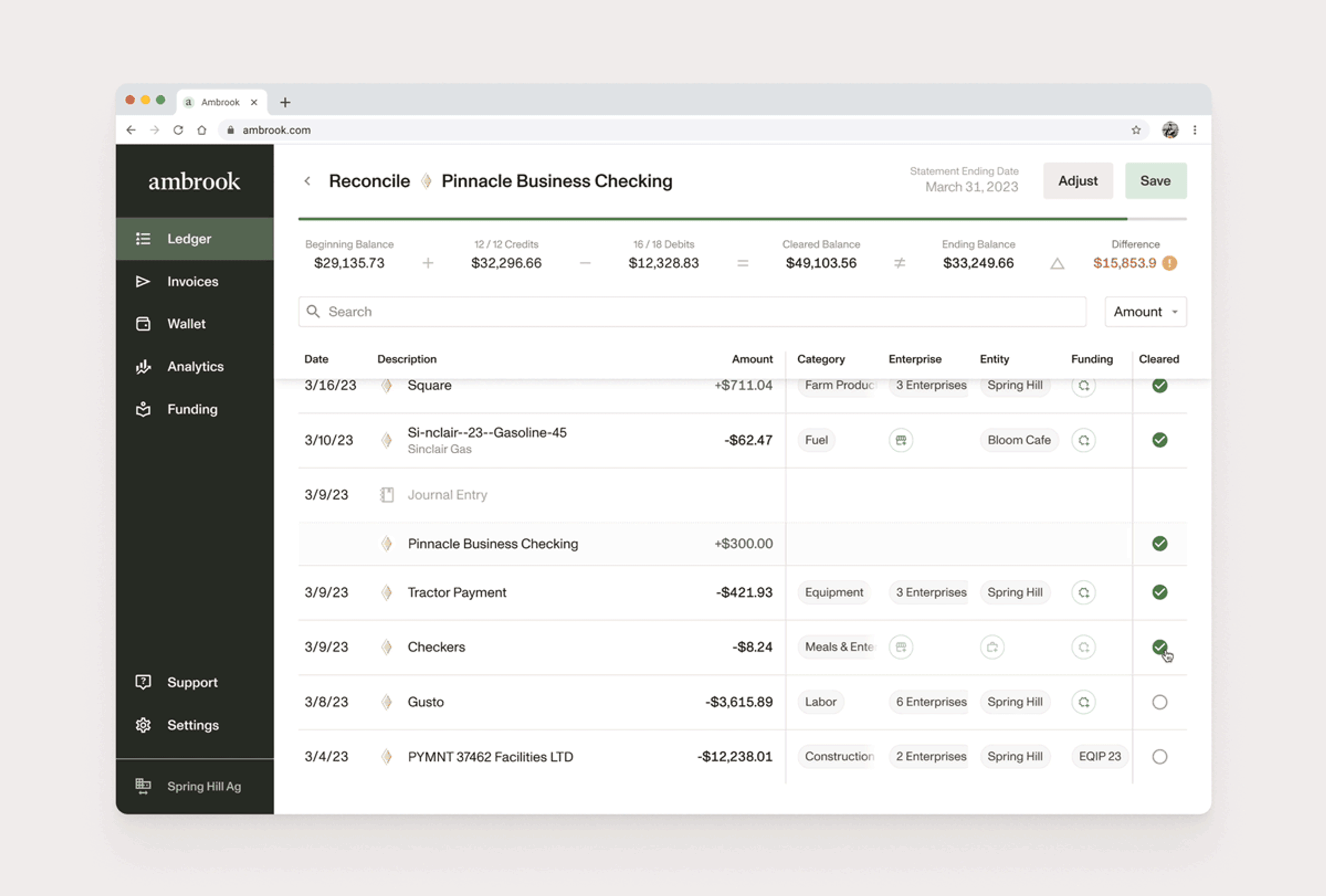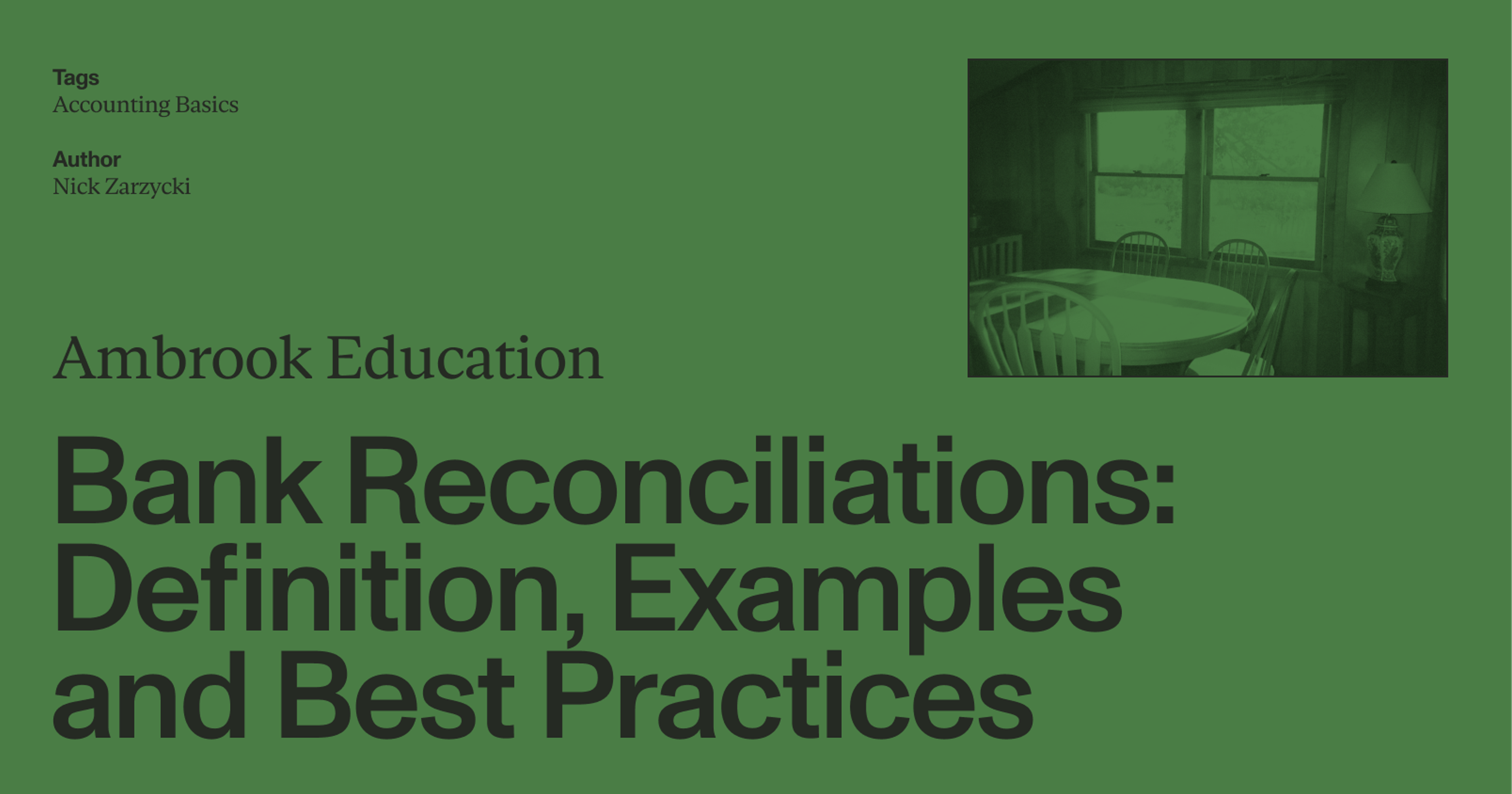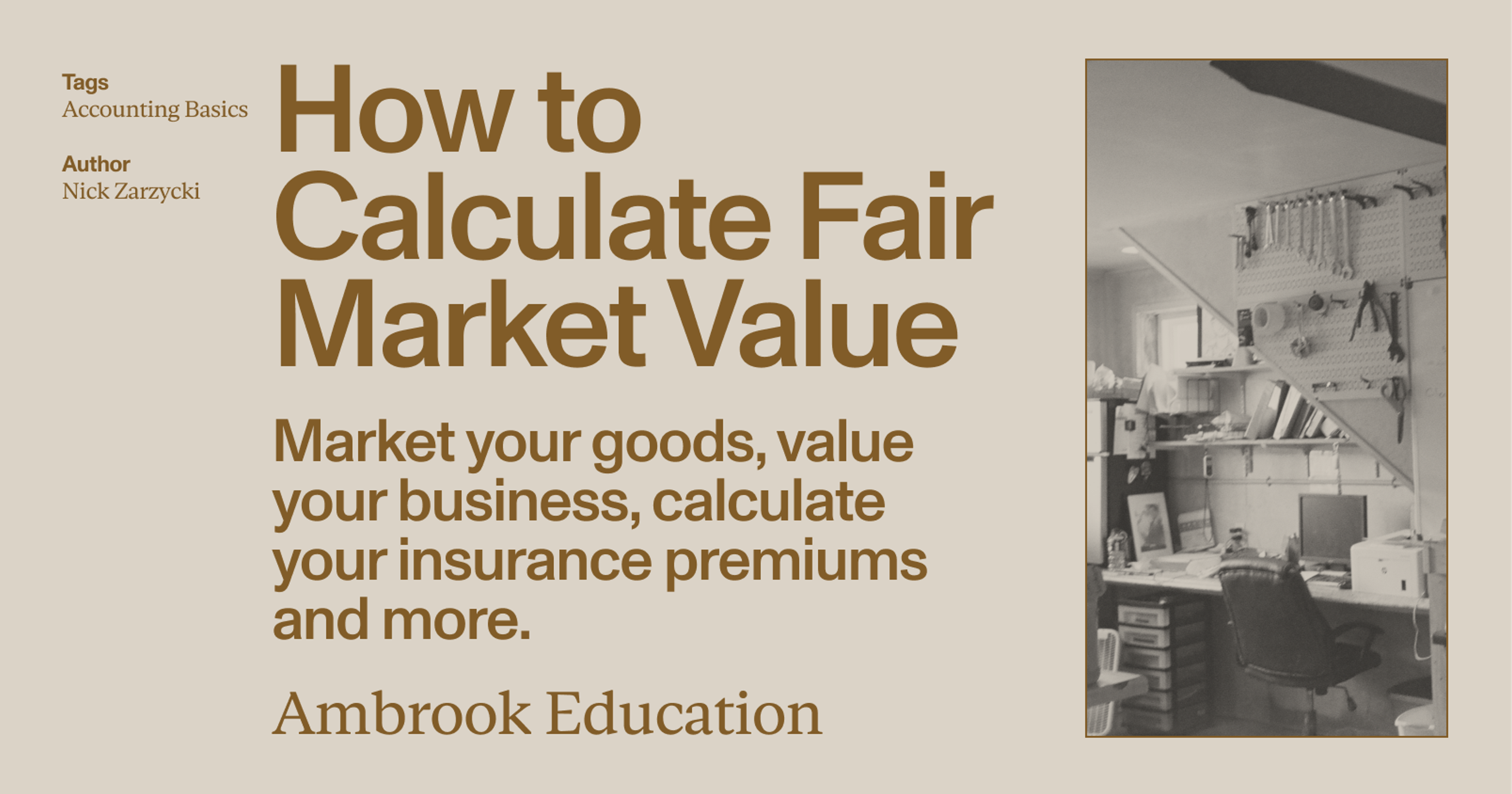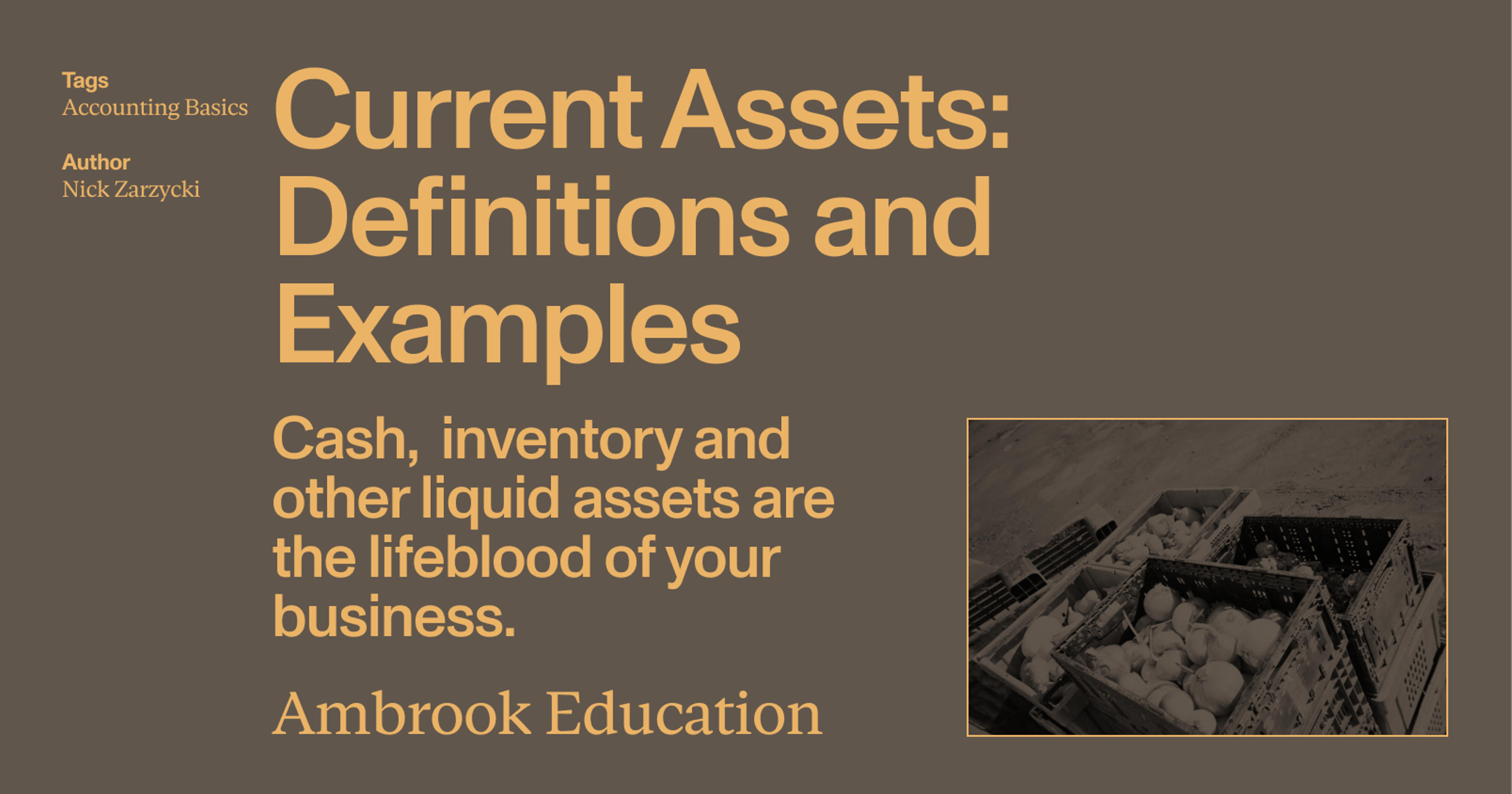Regularly reconciling your books with your bank statements can help you catch bookkeeping errors, prevent fraud and ensure your records match reality.
As your business grows and your finances get more complicated, the occasional bookkeeping or accounting error is bound to creep in. Regularly reconciling your books can help you catch mistakes before they become problems while protecting you against fraud, helping you stay on top of cash flow and receivables, and generally giving you peace of mind. Here’s how it works.
What is a bank reconciliation?
While it might sound complicated, ‘bank reconciliation’ simply refers to the process of comparing your financial records—like your check register, spreadsheet ledger or the transactions in your accounting software—with your bank statements to make sure the two match up.
Businesses will usually reconcile their books in this way once a month, along with other ‘month end’ tasks like posting receipts, sending out invoices, paying the bills and topping up petty cash.
Why are bank reconciliations so important?
In a perfect world, your financial records and your bank statement would align perfectly, but timing differences and human error can create discrepancies between the two. Bank reconciliations can help you catch errors you make when recording income or expenses in the books and ensure the assets on your balance sheet match reality. Bank reconciliations can help you identify:
Recording errors, like transposed numbers, double entries and missing entries
Outstanding checks and withdrawals that you’ve recorded, but that haven’t cleared the bank yet
Deposits in transit that the bank hasn’t posted yet
Bank fees or interest that appear on your bank statement but not in your records
Bank reconciliations can be particularly useful in agriculture, where operators often rely on pen and paper account books that can be difficult to compare to bank statements at a glance.
Regularly reconciling your books can also help you spot unauthorized or fraudulent bank transactions, and even help you stay on top of any payments your customers might be behind on.
How does a bank reconciliation work?
Step 1: Get your books and bank statements together
Get a hold of your financial records–your accounting software, spreadsheets, or handwritten account books—and monthly statements for any bank accounts you use for business transactions.
Step 2: Compare bank deposits with income
Go through each item of income in your books for the month and ensure there’s a corresponding deposit recorded on your bank statement for each one. If there’s any income that isn’t accounted for on the bank statement (or vice versa) find out why. Keep an eye out for deposits in transit, recording errors, and any outstanding checks you’ve recorded but haven’t cleared the bank yet.
Step 3: Compare bank withdrawals with expenses
Repeat the above process for expenses and withdrawals, and note any recording errors, outstanding checks and payments in transit. Keep an eye out for any banking or interest fees that might not appear in your books.
Step 4: Make adjusting entries
After you make your way through steps two and three and note any discrepancies, you’ll have to adjust your books to correct these discrepancies using adjusting journal entries. After making all necessary adjustments, your book balance should match the ending balance on your bank statement.
Bank Reconciliations: An Example
Let’s walk through a simple bank reconciliation for a hypothetical agricultural business named Ambrook Beef Inc. Their bank statement for March 2025 contains the following transactions:
Beginning balance: $10,000
Deposit: $7,500 (cattle auction)
Withdrawal: $4,200 (feed supplier)
Withdrawal: $1,000 (utilities)
Withdrawal: $500 (equipment repair)
Withdrawal: $25 (bank fees)
Ending balance: $11,775
Let’s also assume Ambrook Beef’s books for March 2025 contain the following:
Beginning balance: $10,000
Deposit: $7,500 (cattle auction)
Withdrawal: $4,200 (feed)
Withdrawal: $1,000 (utilities)
Ending balance: $12,300
Ambrook Beef Inc.’s bank statement shows a balance of $11,775, while their books show $12,300.
After taking a closer look, Ambrook Beef Inc. realizes that the $500 equipment repair payment wasn’t recorded in the books properly. Scanning over the March statement again, they notice they forgot to record $25 in banking fees as well.
To fix this, they make an adjusting entry of $525, bringing the new book balance to $11,775. The bank and book balances now match, and the reconciliation is complete!
Ensure your books match reality with Ambrook
Ambrook’s reconciliation function makes comparing your ledger and your bank statements quick and painless. It’s also purpose-built for farm accounting, making it easy to categorize and track personal and business expenses while giving you unparalleled insight into your operation’s performance.

Ambrook makes comparing your ledger to your bank statement as easy and satisfying as checking items off a grocery list.
With powerful bookkeeping and smart tagging functionalities, dedicated payment cards, automatic expense reporting and a custom chart of accounts that grows with your business, Ambrook gives busy operators everything they need to get financial clarity now. Interested in learning more? Start your 7 day free trial today.
Want to learn more about Ambrook?






